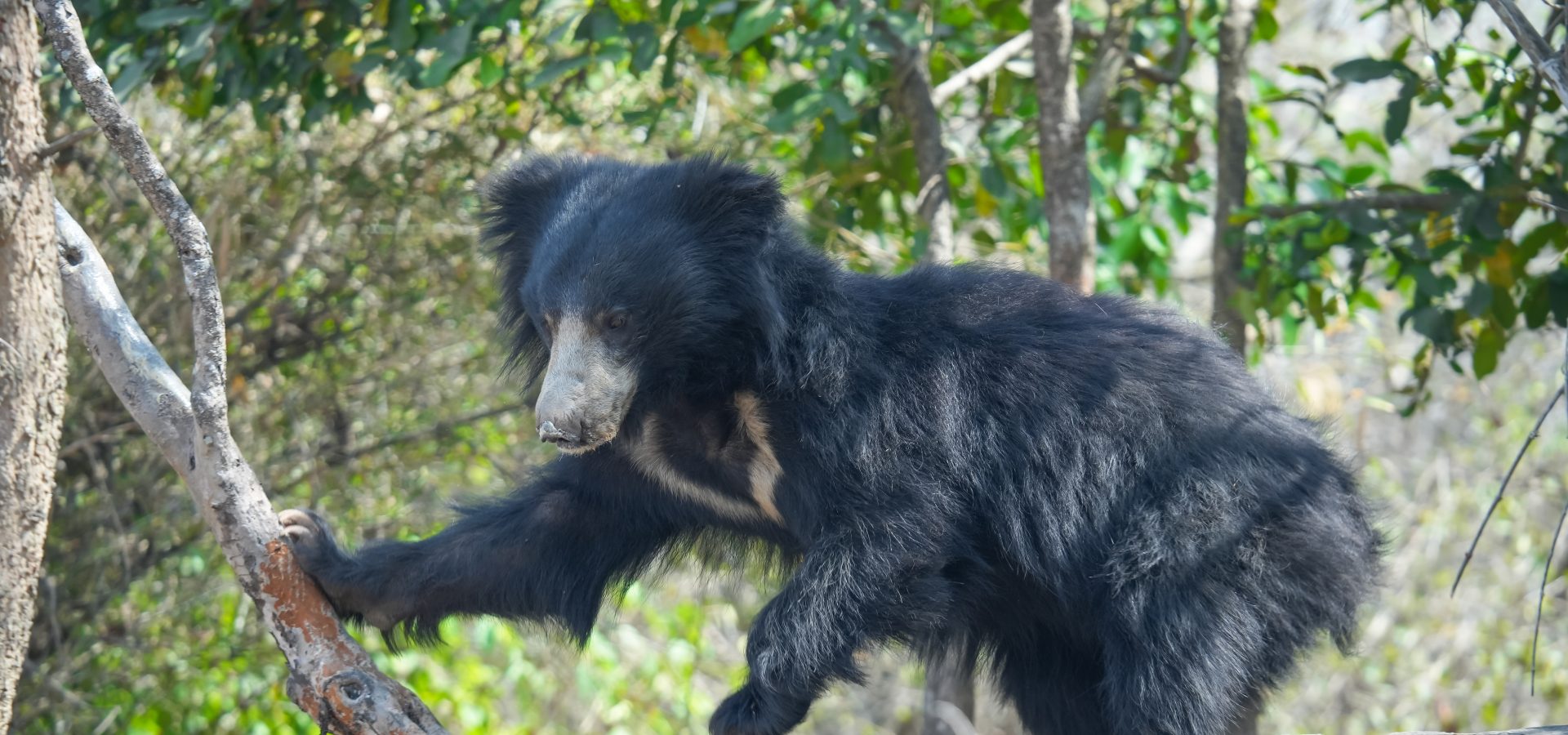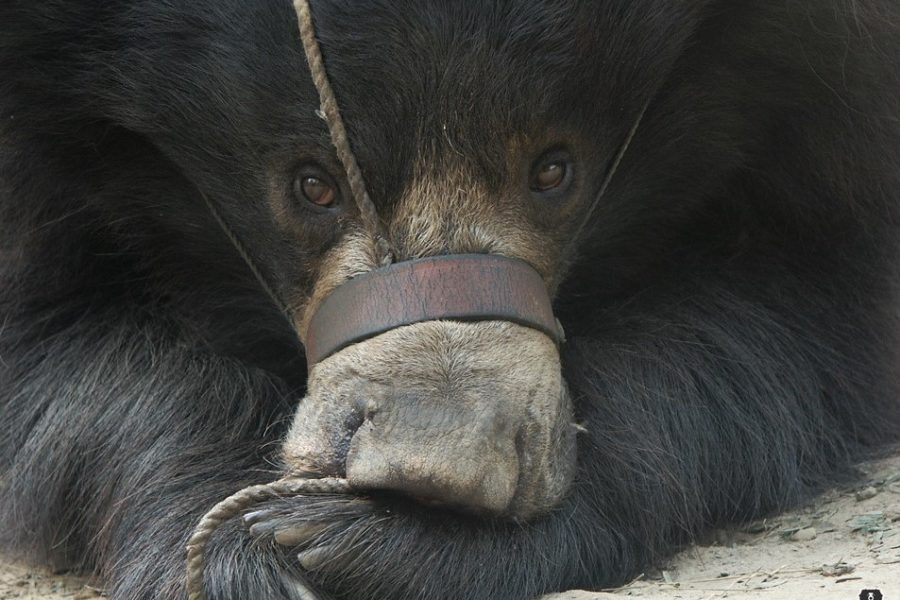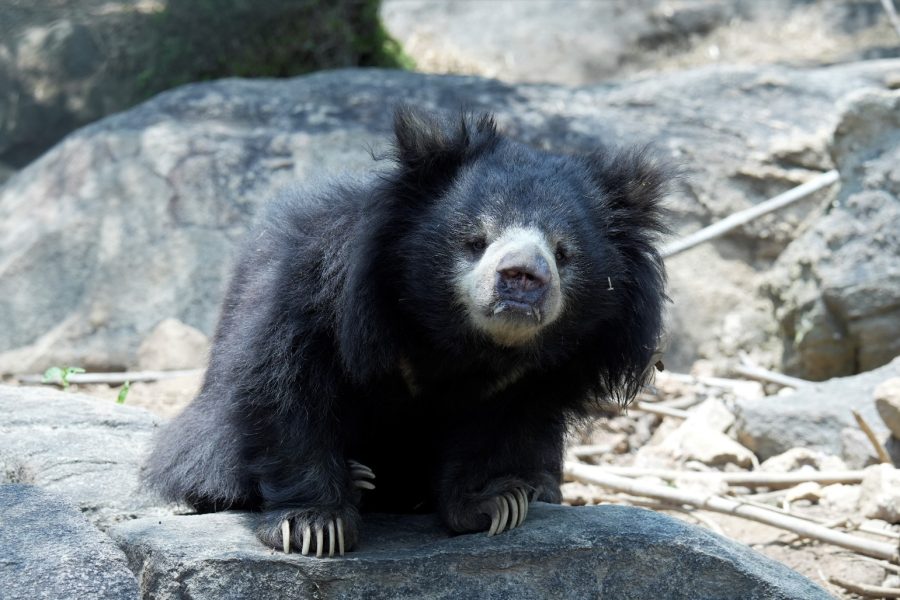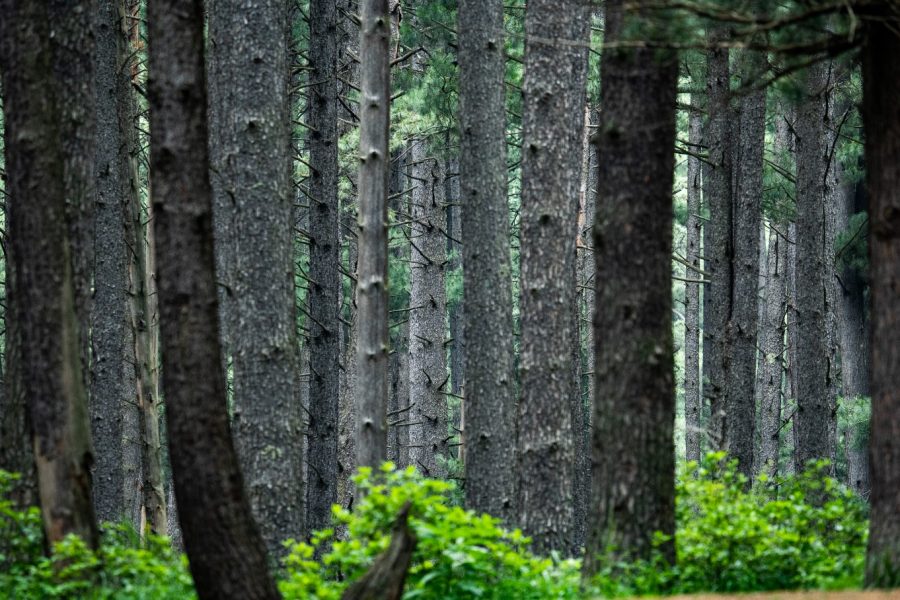While most bear species are usually omnivorous, the reclusive sloth bears stand out as enigmatic foragers with a specialised diet focused on insects. Sloth bears are myrmecophagous in nature, and they have evolved many unique adaptations tailored specifically for hunting and eating termites and ants.
Their distinctive features include a long lower lip that can be stretched over the outer edge of their noses, and a specialised hollowed bony palate designed to suck in insects, both of which have earned them the name “labiated bears”. Furthermore, they lack upper incisors, allowing them to pull up a large number of insects into their mouth with ease.
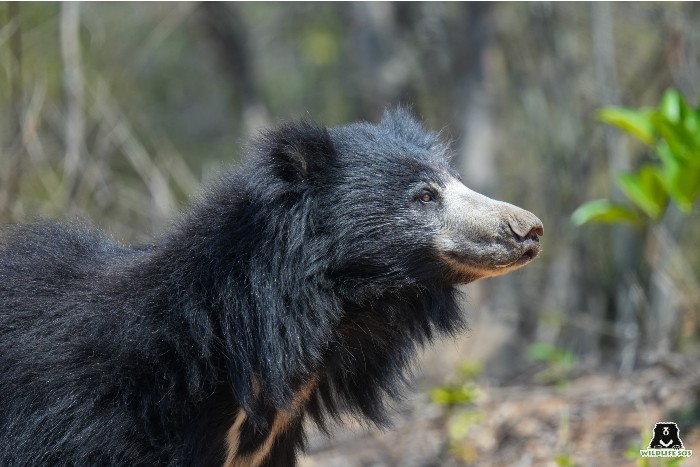
Sloth Bears on the Hunt!
When hunting for termites and ants, sloth bears use their long, curved, sickle-shaped claws to penetrate the rock-hard nest mounds. They blow away the dirt before noisily sucking out the insects through the gap in their mouth due to the absence of their two front teeth. During this time, the bears close their nostrils and use their lips like a vacuum nozzle to expertly extract their tiny prey.
Sloth bears also have another ingenious physical protection against the defensive secretions emitted by the termites — the hairless patch on their snout and their shaggy coat devoid of an undercoat. As they delve into termite mounds to feast on the insects, the hairless patch prevents the termites’ sticky secretions from clinging to their snout.
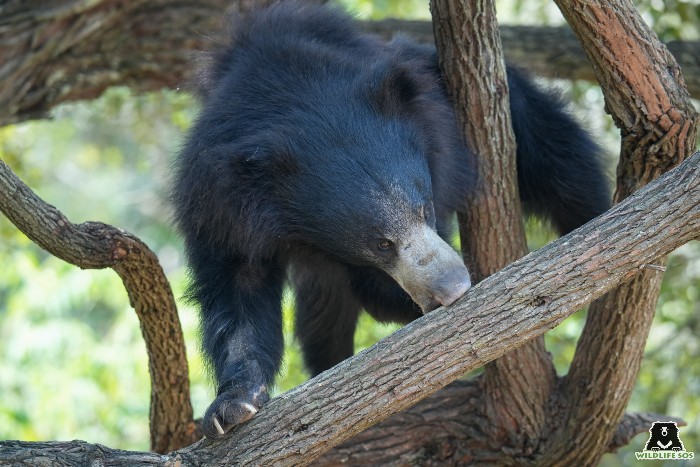
Meanwhile, their shaggy coat serves as a protective barrier that ensures that the secretions from termites don’t come into direct contact with their skin. These are necessary defence mechanisms as the secretion is an irritant that could induce extreme scratching and other preening reflexes in the bear.
Termites and ants are a vital part of the sloth bear’s diet, accounting for approximately 70-90% of their food intake, especially during the non-fruiting season. Rich in protein and many other essential nutrients, insects promote muscle development and overall well-being of the bears. Insects also contribute to a healthy digestive system as their exoskeletons contain a type of fibre called chitin that aids in digestion and gut health of the ursines.
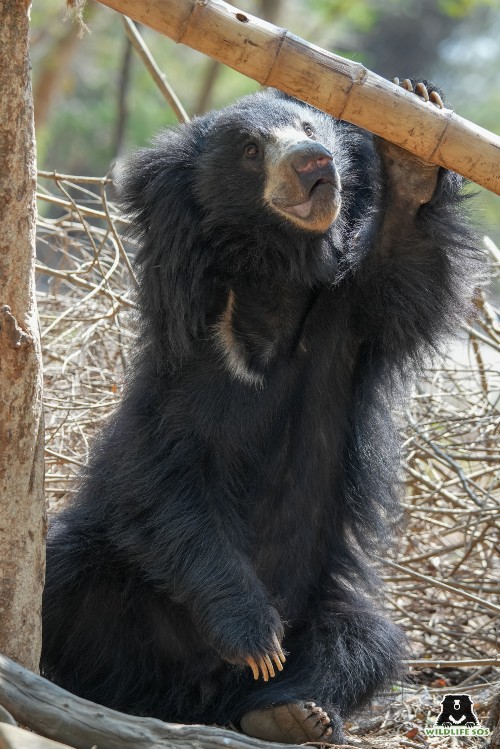
Under long-term care at Wildlife SOS facilities, sloth bears receive their essential dietary needs. These bears are naturally active for eight to 14 hours a day, most of which are dedicated to foraging for food.
At Wildlife SOS, we recognise the importance of providing our rescued bears with as much natural stimulation as possible. In order to address their foraging and insect-based nutritional needs, we have established a specialised Mealworm and Termite Rearing Unit each at the Bannerghatta Bear Rescue Centre (BBRC). These units serve the dual purpose of adding nutrition to the bears’ diet and enriching their environment with foraging opportunities.
Termite Raising Unit
At BBRC, we encourage our sloth bears to hone their termite-hunting skills. This is achieved through our Termite Raising Unit, which is an open and shaded shed filled with numerous wooden logs and branches. The branches are collected soon after they have naturally fallen off the trees.
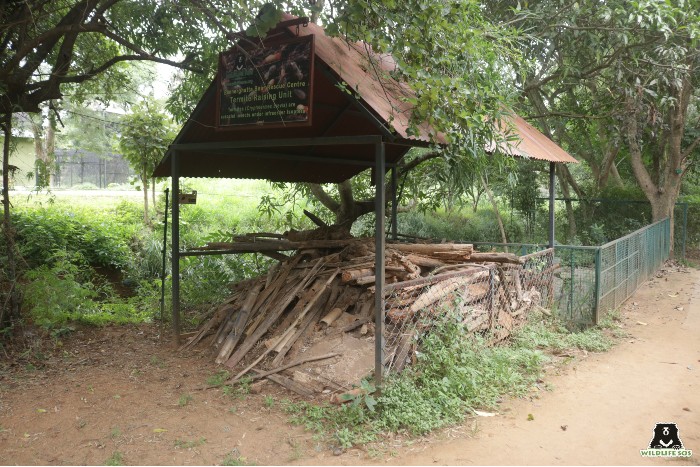
Termites and other insects are inherently attracted to wood. Termites are known to feed heartily into tree logs and they create a thriving colony there. These termite-infested logs are then introduced into the bears’ enclosures as enrichment devices. While engaging with these chunks of wood, the bears apply their clawing skills in order to search for termites, and then use their mouth to slurp in the termites. This activity serves the purpose of engaging them in behaviour that mirrors their wild instincts.
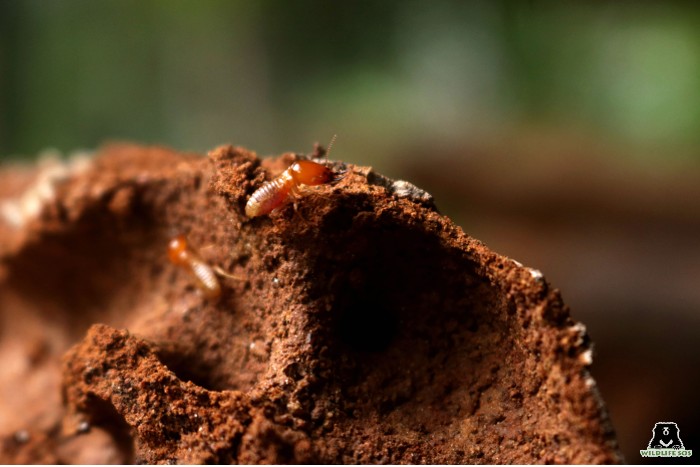
What is a Mealworm?
Unlike what their name suggests, mealworms are not worms. Instead, they are the larval forms of the darkling beetle. There are 20,000 different species of darkling beetles, of which the species that we rear at our centre is called Tenebrio molitor. These beetles prefer dark, undisturbed, and humid habitats, where they function as scavengers and feed on decaying plant and animal material. In anthropogenic settings, they are more commonly found in stored grains, cupboards, and grain mills, where they feed on whole and ground grains.
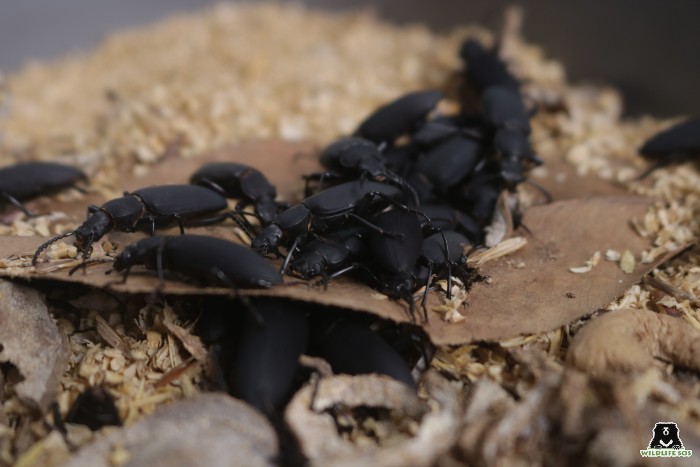
The life cycle of a mealworm comprises four stages: egg, mealworm, pupa, and beetle. Darkling beetles mate and lay eggs, which then hatch into miniscule mealworms. These mealworms undergo growth until they become pupae. After a period of time, the pupae develop into mature darkling beetles. There is another species of beetles that are used as bait or feed called Zophobas morio. The larvae of this species are known as superworms.
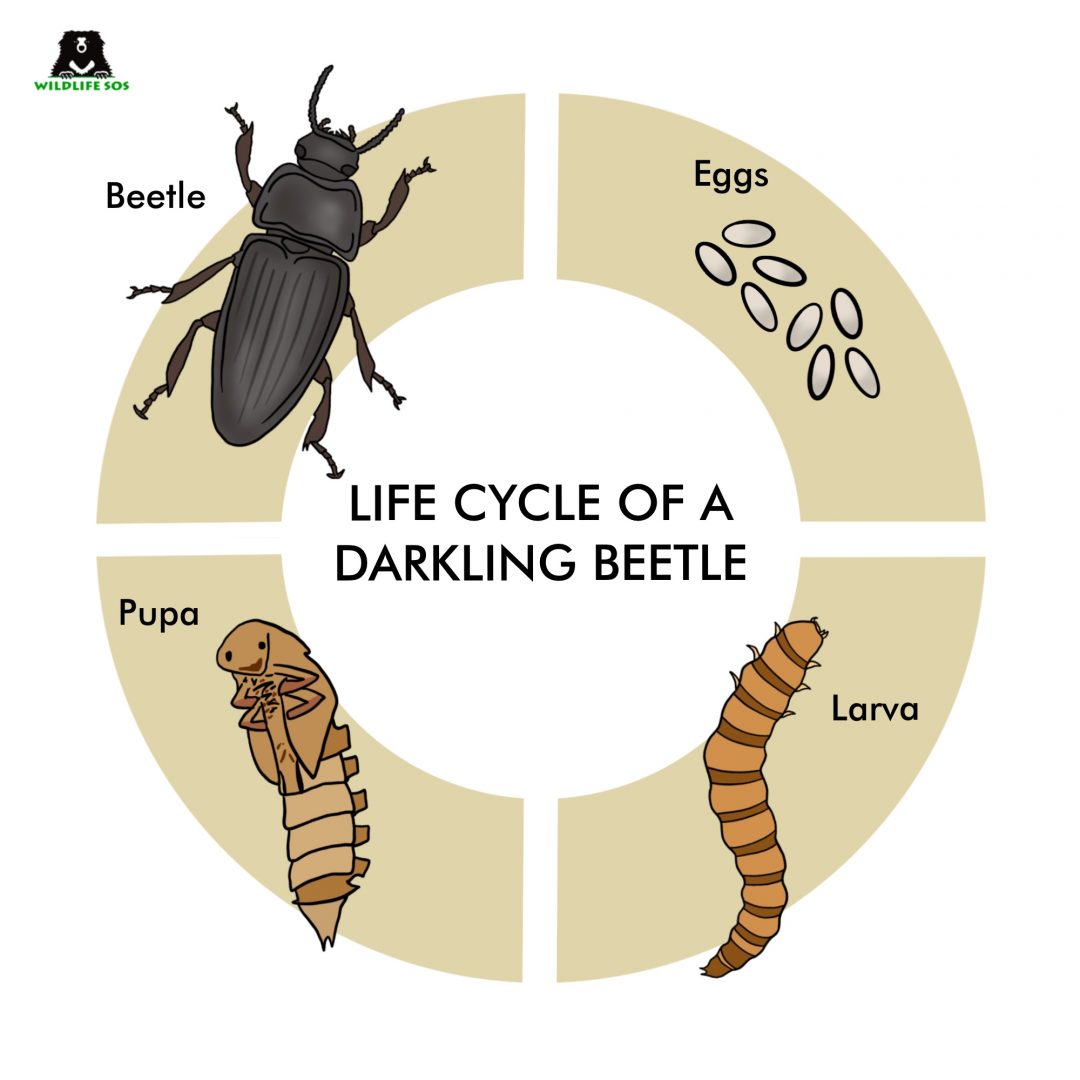
Both mealworms and superworms are reared at our unit, and though the two look similar, superworms are more challenging to raise. Superworms have large pincers, and may bite when handled. Also, due to their longer life cycle, newly hatched beetles tend to cannibalise on the pupae. To prevent this, our staff follows a process to ensure the survival of superworms. The adults, pupae, and larvae are carefully separated into different tubs. By organising the larvae in batches, a continuous and sustainable supply of superworms is guaranteed. This procedure is maintained for mealworms as well.
The reason behind using mealworms and superworms as insect supplements for our sloth bears is that they make excellent high protein treats. Each living mealworm constitutes approximately 20% protein, 13% fat, 2% fibre, and 62% moisture. Furthermore, these darkling beetles are easier to rear and harvest. Sloth bears are therefore provided essential nourishment with utmost care and efficiency.
Mealworm Raising Unit
At Wildlife SOS, our Mealworm Raising Unit is designed to nurture the growth of these insects for ample harvest. The unit comprises several plastic tubs carefully placed in a well-ventilated, dark cupboard. Within each tub, we provide a few inches of substrate known as “bedding”, which can either be made from wheat bran or oats. This bedding serves three significant purposes: it acts as a food source for the developing mealworms, provides a substrate for them to burrow in, and serves as a nesting ground for adult beetles to lay their eggs.
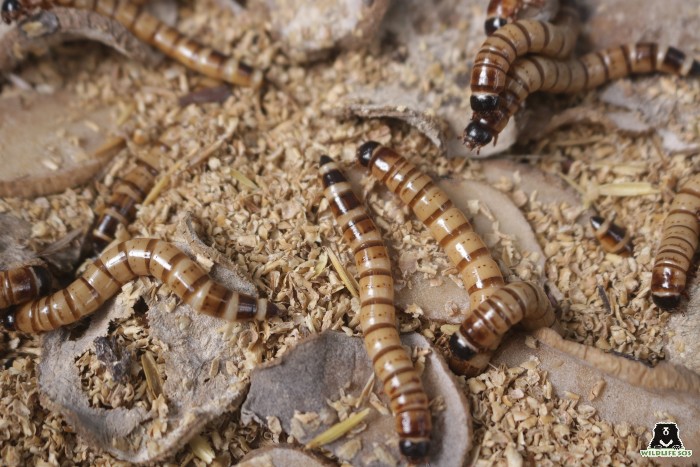
In addition to their food source bedding, mealworms also require hydration. In order to do this, once or twice a week, we include a few slices of potato or sweet potato in their area. These vegetables are not very watery, and the mealworms receive the necessary moisture without risking the possibility of mould growth in the substrate.
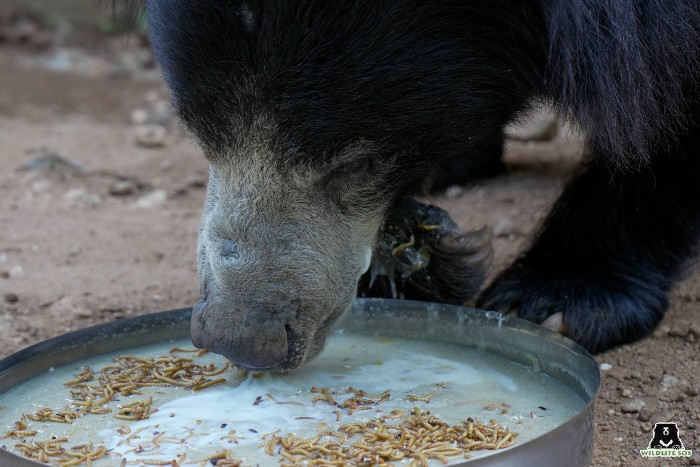
Once harvested, mealworms are added to the sloth bear’s diet, either in a crushed state or as whole insects, depending on the bear’s preference. While some bears readily accept mealworms, others are more wary and tend to reject the addition of the mealworm in their porridge. In such a case, we generously douse the porridge with honey to not only mask the smell of insects, but also entice the bears to eat the sweetened meal.
At Wildlife SOS, we spare no effort in providing the best possible physical and mental care for the rescued animals. If you wish to contribute towards the health and well-being of these magnificent bears, consider donating to our cause and efforts.

